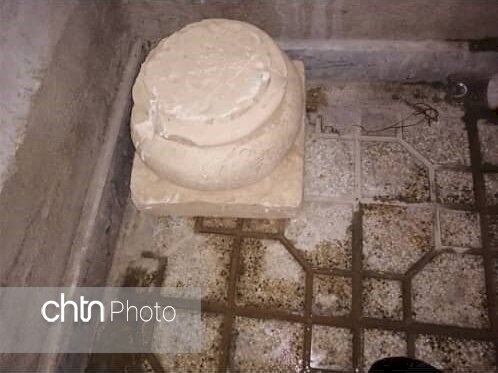Iranian police recover Achaemenid artifact

TEHRAN – Police in southern Iran have found the base of an ancient column, believed to be belonging to ruins of the UNESCO-designated Persepolis.
Recovered from a house in Marvdasht near Persepolis, the stone object approximately measures 50 by 50 cm with a height of 40 cm.
One person was detained in that regard and finally surrendered to the judicial system for further investigation, CHTN quoted a Police commander as saying on Monday.
The accused was traced and lastly arrested after the authorities received reports from cultural heritage aficionados about the [illegal] possession of the relic.
Persian columns are the distinctive form of column developed in the Achaemenid architecture of ancient Persia, probably beginning shortly before 500 BC. They are mainly known from Persepolis, where the massive main columns have a base, fluted shaft, and a double-animal capital, most with bulls.
Achaemenid palaces had enormous hypostyle halls called apadana, which were supported inside by several rows of columns. The Throne Hall or Hall of a Hundred Columns at Persepolis, measuring 70 × 70 meters was built by the Achaemenid king Artaxerxes I. The apadana hall is even larger. These often included a throne for the king and were used for grand ceremonial assemblies; the largest at Persepolis and Susa could fit ten thousand people at a time.
Persepolis, also known as Takht-e Jamshid, whose magnificent ruins rest at the foot of Kuh-e Rahmat (Mountain of Mercy) is situated 60 kilometers northeast of the city of Shiraz in Fars province. The city was burnt by Alexander the Great in 330 BC apparently as revenge to the Persians because it seems Xerxes had burnt the Greek city of Athens around 150 years earlier.
AFM
Leave a Comment